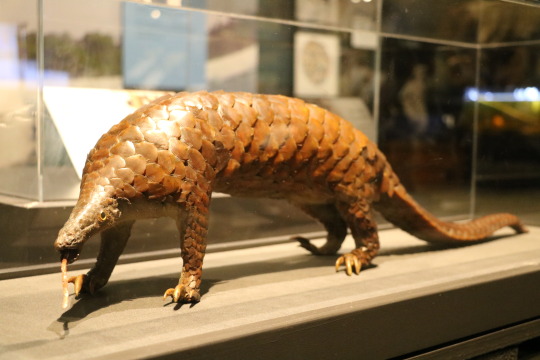
Have you ever heard of the pangolin? If not, it may surprise you to learn that they are the most illegally trafficked animal on the planet.
Sometimes called scaly anteaters, pangolins are unique in that they are mammals that are scaly, have no teeth, and eat social insects like termites or ants. There are eight species of pangolins worldwide: four in Africa and four in Asia.
Their scales are valued in some African and Asian medical practices, and though they may not look appetizing to Americans, their tender meat is a delicacy in some cultures. Just one kilogram of pangolin scales can be sold for thousands of dollars. As a result, pangolin populations have been nearly decimated by humans.
The third Saturday of February is World Pangolin Day, which was instituted by conservationists looking to draw attention to the terrible, impending crisis facing the future of pangolins.
Here at the museum, we raised awareness by including a taxidermy mount of a pangolin in We Are Nature: Living in the Anthropocene, an exhibition that explored the interconnectedness of humanity and nature in the Anthropocene.
The Anthropocene is the current geological era in which humans are making a profound impact on the geological strata. While the term itself is still being debated by geologists, the museum is embracing it as a social and cultural tool for exploring the broad sum effect humans are having on the planet. We Are Nature: Living in the Anthropocene was the first exhibition in the nation to focus on the Anthropocene as a concept and it was built entirely within Carnegie Museum of Natural History.
Related Content
We Are Nature: Repurposing Old Furniture
We Are Nature: Future Thinking
What is the Anthropocene and How Does it Relate to Earth Day?
